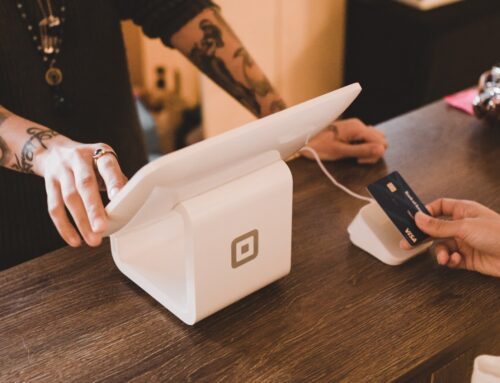As a new business owner, you have probably heard of merchant service providers and merchant payment services. But you may be unclear on what is merchant service and what the correct merchant services definition is. Read on for more information on merchant services and understand what does merchant processing mean.
What is Merchant Services?
A merchant is a retailer or business that accepts credit card, debit card, or any other electronic payment options. So, merchant services are the tools, systems, and processes that allow merchants to collect card and electronic payments from their clients. Merchant payment services can include activities such as providing sales information from the retailer and receiving authorization from the customer’s bank account to process the sale. Merchant service providers ensure that funds are transferred from the customer’s account to the merchant’s bank account within an agreed time, usually 48 hours.

What Does Merchant Processing Mean
The Merchant Processing Transaction Flow
What does merchant processing mean? When a customer purchases from a retailer, the payment merchant services follow the steps described below.
Step 1
When a customer decides to buy something from a retailer whether online or at a store, they will resent the retailer with their credit card. At a physical store, the card will be run through a point-of-sale (POS) terminal whereby the customer card information and the transaction amount will be sent to the retailer’s merchant account provider for processing. If the purchase happens online, the customer will input their card details and purchase amount on the purchasing page of the retailer’s website. Then, the information will be sent through an internet payment gateway to the merchant account provider for processing.
Step 2
The merchant account provider or bank receives the transaction information via a standard phone line, an internet terminal, a payment gateway, or even via processing software. However, the method used will depend on the merchant services infrastructure that the retailer has set up.
Step 3
The merchant’s bank sends the transaction information to the bank card association system to be forwarded to the customer’s card-issuing bank for verification and approval. This is done through the bank card approval system that all banks are a part of.
Step 4
The bank card association forwards the transaction information to the client’s bank. The client’s bank then approves or declines the transaction based on the funds available in their account.
Step 5
The client’s bank sends back their response to the card association. Once the transaction is approved, the bank will include an authorization code for the transaction.
Step 6
The association sends the approval code or transaction rejection to the merchant’s bank.
Step 7
The merchant’s bank sends the approval code or rejection to the merchant’s payment terminal. In some cases, the merchant’s terminal will print a receipt for the client to sign. Alternatively, the client may need to sign for the transaction electronically. Therefore, requires the client to pay the amount stated.
Step 8
The client’s card issuing bank bills the client
Step 9
The client pays their bank.

Merchant Services Definition
Fund Settlement
At the end of each business day, a merchant will run their accounts and close out the day’s sales. At this point, their POS system would add up all the sales received via the merchant system and deposit this information to their merchant account. The merchant bank will then request the relevant funds from each of the client banks that they transacted with that day.
The client banks will then send back the required funds less their interchange fee to the merchant’s bank account using the bank settling system. At this point, the merchant bank deposits the funds to the merchant’s bank account. The merchant bank then deducts transaction charges which are called ‘discount fees’. The fund settlement process only takes between 24 to 72 hours.
It will be noted that once the funds are cleared in the merchant’s account, they still can be recalled if the client cancels the transaction for any reason. For example, a client called in to report that their card was stolen and they did not make a purchase. At that time of the client calling in, the transaction is cancelled.
This is the reason why getting a merchant account is often a complicated process with many underwriting requirements. Banks can lose money to fraudulent credit card transactions. It is always best to double check your statements to ensure everything is correct.
Merchant Services are a Collection of Numerous Activities
In summary, payment merchant services involve many activities. This includes providing equipment and processes to facilitate the transfer of funds and assisting with PCI compliance. Hopefully, now you understand what does merchant processing mean. For more information on how merchant accounts work, read the rest of our site.


